Flood. Deluge. Squall. Gale. Tempest. Cyclone. Hurricane. Typhoon. Tsunami.
However you want to record it, EXTREME WATER EVENTS are terrible things. They are costly, destructive, and worst of all, deadly. I would prefer they exist only as fictional fodder in the pages of a book, or in the form of an illustration on its covers, and never in the real world. But they do exist in the real world, and they are increasing in intensity and numbers at a rate that should be alarming to all of us.
When I was a seasonal worker for the Colorado State Forest Service, I participated in the cleanup and restoration of the Big Thompson Canyon after its historic flash flood of July 31, 1976. It claimed the lives of 144 people and caused tens of millions of dollars in property damage. It was thought at the time to be a "once in a hundred year event." But thirty-seven years later, on September 11-12, 2013, it happened again, only this time it wasn't a freak flash flood but an increasingly heavy downpour that went beyond the Big Thompson Canyon, spreading across 200 miles and 17 front range counties, from south of Denver to just over the Wyoming border. The flood damage was estimated at 4 billion dollars. Unbelievably, only nine people were killed this time around.
But so much for that old "once every hundred years" theory.
Now of course we know exactly what is causing some of the extreme water events that have taken place in the 21st century. It's climate change. And not surprisingly, we have only ourselves to blame for it. If we don't get smart right now and make the necessary changes that are absolutely required to stop the Earth's temperature from rising, we will continue to face more and more extreme water events, and every other type of extreme weather event that the elements can deliver. And so will our children. And their children too.
But don't take my word for it, listen to what the science is saying:
"Human activity is the main cause of climate change. People burn
fossil fuels and convert land from forests to agriculture. Since the
beginning of the Industrial Revolution, people have burned more and more
fossil fuels and changed vast areas of land from forests to farmland.
Burning fossil fuels produces carbon dioxide, a greenhouse gas. It is
called a greenhouse gas because it produces a “greenhouse effect”. The
greenhouse effect makes the earth warmer, just as a greenhouse is warmer
than its surroundings. Carbon dioxide is the main cause of
human-induced global warming and
associated climate change. It is a very long-lived gas, which means
carbon dioxide builds up in the atmosphere with ongoing human emissions
and remains in the atmosphere for centuries. Global warming can only be
stopped by reducing global emissions of carbon dioxide from human fossil
fuel combustion and industrial processes to zero, but even with zero
emissions, the global temperature will remain essentially constant at
its new warmer level. Emissions of other substances that warm the
climate must also be substantially reduced. This indicates how difficult
the challenge is." --- CANADIAN GOVERNMENT Climate Assessment, 2023.
"Given the tremendous size and heat capacity of the global oceans, it
takes a massive amount of heat energy to raise Earth’s average yearly
surface temperature even a small amount. The roughly 2-degree Fahrenheit
(1 degrees Celsius) increase in global average surface temperature that
has occurred since the pre-industrial era (1880-1900) might seem small,
but it means a significant increase in accumulated heat. That extra
heat is driving regional and seasonal temperature extremes, reducing
snow cover and sea ice, intensifying heavy rainfall and changing habitat ranges for plants and animals—expanding
some and shrinking others. Most land areas
have warmed faster than most ocean areas, and the Arctic is warming
faster than most other regions." --- NOAA (National Oceanic and Atmospheric Administration) Climate Assessment, 2023.
"The future is made of the same stuff as the present."
--- Simone Weil
ALL THAT BEING SAID, the books featured below were all written and illustrated in the 20th century, back when extreme water events were considered to be just a normal aspect of the natural cycle of weather, or Earth's mutability, or the product of someone's incompetence, negligence, or criminal behavior.
You know-- a simpler time in history when flood insurance was actually affordable.
High Water was published in hardcover by Little Brown & Company in 1954. The jacket art depicts a rescue taking place on the rooftop of a flooded
Mississippi River home, and was produced by one of the 20th century's
most prolific book cover illustrators, Barye Phillips
(1905-1968). Phillips was such an accomplished illustrator during his 30
plus years as a professional that I have no doubt he inspired countless
others to follow in his footsteps.
Richard Bissell (1913-1977) was a Harvard graduate and the author of twelve books, a mix of fiction and non-fiction alike. Allegedly, after college he was able to "secure a mate's and pilot's license--both all tonnage--on the Upper Mississippi and Monongahela rivers, the only author so licensed since Mark Twain." I guess you could say Bissel was following in the footsteps of greatness too.
'At about two miles an hour and mostly less the Royal Prince pulled out of St. Louis and started shoving a tow of eight coal barges upriver. And with all the water out of Minnesota, Wisconsin and Iowa coming down the valley, the crew was in no happy mood. FIRST MATE DUKE: I have been in floods before and they never bothered me a particle... but we weren't having no big time with this flood." CAPTAIN CASEY: "We are shoving damn poor... and what's more she is steering like we had left the rudders back at St. Louis." PILOT IRONHAT: "Next thing I expect to see is a whole town coming down-river including the courthouse and the depot." The Kid, deck hand: "Kinda romantic.... that's what I like about it out on this boat. It sure beats workin on a coal truck." GREASE CUP, CHIEF ENGINEER: "We have all got a few bolts loose. We none of us have to be here unless we want to." Except Marie Chouteau, who was a refugee they took off a flooded farm house roof: Marie had on just a pair of blue jeans and a lot of mud... MARIE: "Yeah-- I'm in a hell of a fine shape. The farm is under six feet of water, Maw and Paw and Frank are all drownded... and I'm layin here in a steamboat. Sure, I'm O.K." ARKANSAS, DECK HAND: "That's bad luck, havin a wooman aboard. You look at the record you'll find most always when a boat gets into some trouble or another why there was a wooman aboard." With the river working up to flood crest, and with the Captain right away feeling sorry for MARIE-- "When old Duke gets in that moon it sometimes is a shame the things that can happen"--- the Royal Prince was ready for calamity. Up past Cap au Gris, Clarksville, Hannibal, Saverton Lock, Canton Lock, Quincy... Like GREASE CUP said: "Anybody who wants to get out and fool around on the Mississippi in high water who don't have to is plumb crazy." In High Water, Richard Bissell has written a drama of river life which has all the conviction, power and gusto of A Stretch On The River-- his widely acclaimed first novel-- and the racy humor of 71/2 Cents, his gay, amorous story about a strike in a pajama factory. High Water is in the best tradition of the American river yarn-- rugged and eloquent, fresh and exciting.'
Rain of Terror is about an American reporter living in Rome who accepts an assignment in a mountain village to cover a regional flood, one that is still ongoing and has so far killed 32 people. Mix in a half dozen subplots involving murder, art thefts, political-power struggles, a troublesome teenage waif, the reporter's clinging lover (the boss' wife, wouldn't you know), and a hired killer bent on his demise, and you have one hardboiled, convoluted mess of a razor-thin, entertaining disaster novel. Malcolm Douglas was a pseudonym of Ronald Douglas Sanderson, an
Englishman who emigrated to Montreal, Canada in 1947. Sanderson
(1920-2002) worked a variety of odd jobs at first, factory worker,
waiter, retail clerk, and nightclub singer before finding permanency as a
writer/producer for the Canadian Broadcasting Corporation. His first
novel, a literary endeavor written in 1952, failed to find an audience
and so he set his sights on writing crime novels instead, ultimately
publishing 25 of them in his lifetime. The worldwide settings in his books were often a reflection of his own eventual travel wanderings, from Europe to Africa to
America and then back to Europe, where he lived out his remaining days with his wife and kids in Alicante,
Spain.
The powerful cover art by James Meese has our haunted protagonist attempting to rescue his lover from a torrent of water. Meese (1917-1971), who excelled at painting damsels, dames, molls and gumshoes in sometimes intense situations, was in constant demand by paperback houses in the 1950's and 60's, including Gold Medal, which published Rain of Terror in 1955.
"You pig!" she shouted. "I thought you'd been killed!"
She
stopped. She moved forward and put a hand on his head. "Darling, I'm
sorry. The rain, the floods, all those men dead on the mountain. It's
been terrible for you. I wasn't thinking. Forgive me."
He tilted
back his head. The hand slid over his forehead and then he was looking
into her eyes. He said, "Your husband's dead, too. I saw him. He's
deader than a doornail. He went floating off down the mountainside."
Her eyes went a fraction wider. She stared. She shook her head and the
tangled, wet hair tumbled around her face. A half-uttered sob died in
her throat.
She whispered, "Jake, you didn't..."
They both sat without moving a muscle.
"No," he said. "Did you?"
Hodder published a paperback edition of The Flood two years later in 1958 (bottom). They used the same illustration that was on the original hardcover, but with the added figure of a sexy woman superimposed over it. By default, paperbacks have always had to strive harder than hardcovers to attract attention.
HODDER & STOUGHTON: 'The worst floods that have ever been known start to besiege the world. Islands disappear and Great Britain is on the point of extinction. In a state of National crisis Dr. Palfrey comes to the fore. But he is unable to do anything until he knows the source of the flood. A terrifying and thrilling adventure-- all the more frightening because it seems quite possible.'
HODDER: 'Islands had been disappearing-- under the worst floods ever known. Natural Disasters? Or something much more sinister? Dr. Palfrey was not alone in fearing the latter. Was it mere coincidence that Sir Gabriel Davos, the research chemist, had been in the vicinity of each island before it was overtaken by misery? And what were the mysterious crab-like creatures that had invaded the islands in their thousands? One thing Palfrey did now-- that unless he acted soon, the whole of Great Britain might be threatened. Not merely with floods, but with extinction!'
'Noah and the Ark... At times Dr. Palfrey was willing to admit that the world was less than perfect. He and the agents of Z-5, the international intelligence agency that he headed, had many times saved the world from the forces of darkness... but when the strange water creatures known as the *OCTI invaded the land, bringing the powers of an ocean free from the barriers of the shore, it seemed that only the madman who considered himself the new Noah would survive--and with him his insanities, two by two!'
Why I failed to recognize the collectibility of the the Blackwater horror series when they were first published in paperback by Avon in 1983 is something I can't explain. If I was to try and collect them now it would cost me a small fortune, assuming that I could even find high-grade copies for sale, which I doubt. Michael McDowell (1950-1999) was, according to Stephen King and practically everyone else who has ever read his works, a major genre talent, if not literary talent, even if McDowell didn't believe so himself. If I told you what screenplays he also wrote that were made into films and TV episodes you would probably be amazed, even if I think only one of them has actually stood the test of time (hint: it combines Halloween with Christmas). McDowell was also a collector of death memorabilia, and after his passing from Aids in 1999, all seventy-six boxes of his unique collection was donated to Chicago's Northwestern University, where it went on display in 2013. Items included death pins, photographs and plaques from infant caskets, along with a bunch of other macabre things. Weird, to be sure, but from my experience the best writers have always been more than just a little weird.
Blackwater 1, The Flood, was published by Avon in 1983 as a paperback original. Volumes 2 thru 5 were also published in 1983. The cover art on the series was produced by Wayne Barlowe, who became celebrated among science fiction fans in 1978 for writing and illustrating the outstanding Barlowe's Guide to Extraterrestrials. In 1996 he struck again with his Barlowe's Guide to Fantasy. He has since produced literally hundreds of outstanding genre book covers, and he's still at it today.
The Volume 1 Corgi paperback edition, with its hissing snake, was published in 1985. Although not credited, the cover art is most likely that of Welshman Terry Oakes, one of the United Kingdom's finest illustrators of the fantastic, with hundreds of wild book covers to his credit.
AVON: 'Elinor Dammert was rescued from her room in the flood-isolated hotel. What strange mission brought her there? How did she survive her isolation? Why was she in the Alabama town of Perdido that Easter morning in 1919? These questions would never be answered because larger and even more terrifying ones would be asked. She soon would become a strange presence in the wealthy Caskey family and their town. Horror, virtually unspeakable and nearly undescribable, follow.'
Walter Baumhofer is the artist who produced the rescue scene on the cover of the 1951 Cardinal paperback edition of Hungry Hill, Daphne du Maurier's bestselling Irish family saga, though he wasn't the first to illustrate her novel. Among the notables that have are; Hugo
Steiner-Prag, Bernard D'Andrea, Harry Bennett, Renato Fratini, Clark
Raymond, Gene Szafran, and Fred Pfeiffer. Those names notwithstanding, Baumhofer is still a giant in the field of illustration and fine art. He provided pulp magazine covers and interior illustrations for decades, including and especially Doc Savage, before moving on to paperbacks, the slicks and art galleries.
'When Fanny-Rosa Flower married young John Brodrick, she brought a
reckless train into the smug Brodrick blood. From this combination of
opposing temperaments all of their troubles flowed. Here is the powerful
story of the destiny that engulfed them. Here is the unforgettable
drama of men and women who lived and loved with all the passionate
wildness of the Irish country that surrounded them.'
The Chalet School and Richenda was published by Chambers in 1958. The story is typical for this series aimed at teens: A young girl, Richenda Fry, is sent to the Chalet School as punishment for disregarding her father's instructions. She is quickly welcomed though, losing her sulkiness in the process, and with the help of her new school chums she finally makes amends with her deeply agitated father. A happy ending yes, but before we get to that Richenda and her friends are nearly drowned in a flooded river.
This is a solidly drawn jacket that I came across one day depicting a flooded schoolhouse or perhaps a manor house. The House in the Floods was published by Blackie &
Son of London in 1942. The only information about its author that I could find was that Norah Pulling wrote maybe a half of dozen juvenile books during the 1940's and 50's. The jacket art was
produced by Inez Topham, a prolific British illustrator of
juvenile books during the 1930's, 40's and 50's, about whom very little
has been written about.
 |
| CLICK ON IMAGE TO ENLARGE |
Trying to describe in detail the many themes, or plot devices, in Nevil Shute's In the Wet,
would probably take up more space than I am willing to commit, so
here's an abridgment: Alcoholism, opium-addiction, disease, adventure,
romance, sailing, flying, religion, reincarnation, soul-transference,
extra-sensory-perception, futurism, democracy, voting-rights,
nationalism, socialism, classism, racialism, incendiary device (on a plane, of course), and oh--yes, the Commonwealth and the English Monarchy. Oh--and I almost
forgot---monsoon rains. That's what's coming down on the cover of
the 1953 UK hardcover first edition published by William Heinemann.
The jacket art was produced by Val Biro
(1921-2014). Biro was a Hungarian, but on the eve of WWII his father
sent him to England to study art. He never left the Isles after that and
became an extremely prolific illustrator of books for children and
adults alike, and on both sides of the Atlantic.
Ballantine published this paperback edition of In the Wet in 1964. Their cover
art was not credited, but I believe it could be the work of Robert Blanchard. Blanchard (1914-1993) was born in Massachusetts and learned to draw at
the Worcester Art Museum. While serving in the Coast Guard during WWII
he was sent to work on films in support the war effort at Disney. After
the war he found work in NYC as an illustrator and Art Director for
several publishing companies. In the late 1950's he began to produce
cover art for Ballantine. He is noted today primarily for his fine
art paintings, many of which are abstract, which he continued to
produce well into his retirement.
PAN: 'Death or Disaster came that night to many people in Hunstable. For a few it meant surprising change... The ATTEMPTED SUICIDE and her RESCUER each of whom found fresh hope-- and a new reason for living. The BANK ROBBERS whose long term plans so unexpectedly came off. The EMBEZZLER-- foiled in a quick getaway.'
 |
| CLICK ON IMAGE TO ENLARGE |
Fontana published the first paperback edition in 1984 (bottom), using the same cover art as the hardback but now enhanced by a bright blue sky. As I've said, paperbacks work twice as hard to achieve the same goal.
COLLINS: 'Amsterdam Schiphol airport is under floodwater. Aircraft are trapped and silent. A sinister terrorist group, the FFF, has caused the chaos. The aim of the organization is not to murder. It is to demonstrate the destruction it can cause by blowing up strategically placed dykes and so reduce the Netherlands to a state of fear and helplessness. And ripe for blackmail. It is Lieutenant Peter van Effen's mission to sabotage their plans. Van Effen is a detective working under cover amongst the notorious Krakers--criminal gangs who specialize in drugs, in prostitution, in arms deals. He also heads the Amsterdam bomb disposal squad. Using his specialist knowledge in explosives and with the help of two friends, flamboyant George and young Vasco from Utrecht, van Effen attempts to infiltrate the FFF. The price for failure--the flooding and annihilation of Holland.'
FONTANA: 'Amsterdam Airport has disappeared. The mass of water in its place is the work of the FFF-- an Irish terrorist group who want to force Britain's hand. The Dutch call in Detective Lieutenant van Effen-- feared interrogator and undercover intimate of the criminal Krakers gang-- to sabotage the FFF's plan. If van Effen fails and the FFF get control of the vital dyke, either Holland will sink beneath the sea or Britain will be awash with blood.'
Ballantine's 2nd printing of After the Rain was published in 1965 (bottom). The cover art was not credited, nor is there is a signature visible, but if I were to speculate I would guess it's the work of one of these two gentlemen: Ed Valigursky, even though his brushwork tended to be a little less sharply delineated than this, and Dean Ellis, whose brushwork practically mirrors this painting, and who seemed to swim into publishing right around this time.
"If you like cataclysmic novels John Bowen's AFTER THE RAIN is as exciting as any deluge you can hope to find; but if you think deluges are too trivial, John Bowen has a surprise for you: his novel turns out to be satire of the first order." --- Angus Wilson (blurb on back of paperback).
EXCERPT:
"You mean we've been saved from race-suicide by an act of--well, Nature if you like?" I said.
"Nothing of the kind. If you wish to understand what I am saying, you will do better not to interrupt. Not only were men increasing their numbers at a terrifying rate, but the poorer, more brutish sort were increasing at a rate faster than the others. Have you any idea of the rate of mental deficiency in Great Britain over the past fifty years? No, of course you haven't. The proportion of morons and near-morons has increased because, although one can persuade intelligent people to practice birth control, one cannot teach contraceptive methods to idiots, and large families have persisted among people of low intelligence. In other words, men have increased their numbers while lowering their quality; idiots have increasingly outnumbered the intelligent, and, under a system of democracy, had as much political power." He [Arthur] took off his spectacles to polish them, and I noticed that his hands were trembling. "Lunacy! he said. "It was lunacy."
"I see."
"The Flood has wiped all that out. Only intelligent people will survive it, and such of the stupid people as they choose to carry with them."
"Why carry any?"
"For the rough work. You observed Mr. Ryle's physical proportions. He will be very useful to us when the waters subside, and we begin our settlement. And with careful cross-breeding---"
"What if they never subside at all?"
"Of course they will subside," Arthur said angrily. "Of course they will. Do you imagine Natural Selection intends to replace us with fish?"
John Masters was born in India in 1914, and became a regular officer of the Indian Army. In WWII, he served honorably with the Chindits behind enemy lines in Burma. After the war he and his wife Barbara moved to the U.S. and he took up writing to make ends meet. Masters "strove for accuracy and realism in his works, resenting it when people mistook his characters' views as his own. He was extremely hard-working and meticulously well-organized, both as a soldier and a novelist." Masters died following heart surgery in Santa Fe, New Mexico in 1983.
HARPER ROW: 'It was on a Tuesday in February that Chief Boatswain's mate John Remington, in charge of the Coast Guard station at Monomoy (allegedly Provincetown, MA), saw the first photograph of the storm. It was a big one all right--they knew that--but it was way down off Florida and nobody was too sure it was going to hit and nobody really cared too much... On Valentine's Day the storm struck, and very soon the town of Monomoy (population 2,200) was cut off from the outside world--blanketed in swirling snow and swept by icy winds. There was no help to be had except from themselves, from each other. And as the crisis of survival mounts, the true faces of the citizens of Monomoy show themselves. Some rise to the challenge with a fortitude and assurance they had been unaware of; others collapse in weakness and despair. There are courage and cowardice, pettiness and nobility, selfishness and humanity. In the desperate hours and days that follow, the inner lives and personalities of the townspeople are revealed."
CORGI: 'In Cape Cod the temperature was 18 below zero. A relentless blizzard was creating snowy white mountains of up to twenty feet in height. This was the kind of storm that stripped a man of all social and moral conventions... stripped him down to the basic, selfish instinct of survival.... Most of the Monomoy folk gathered in the Longships Hotel, hoping for refuge. Power, fuel, water and communications giving out. The tide was coming so fast it threatened to wash the town into the bay. And the Longships itself was smack in the path of the raging ocean. Unless a miracle occurred the hotel and and all its occupants would be swept away by waves fourteen feet high, coming through it like express trains... Inside the Longships a fearful, elemental drama was being played out. And more than one appalled spectator felt that after the events of the past two days, the town might well be better off buried, like a modern day Sodom and Gomorrah...'

Storm is not George Stewart's most famous novel, but that doesn't make it any less impactful. Told from multiple points of view, it is the story of a massive Pacific cyclone slamming into the West Coast of the United States, and of the twelve tense days leading up to it (each day a chapter in the book). The main protagonist is not human however, but rather the storm itself, and she has a name---Maria! Penguin published the first mass-market paperback edition in 1944, under its 'Infantry Journal' imprint. It was one of the first paperbacks that was issued with a protective jacket (at bottom), a practice that didn't last long. The jacket artist was Denver Laredo Gillen. The cover of the paperback wrap itself (at top) is initialed in the lower left corner "h", which means that it is most likely the work of artist and art editor H. Lawrence Hoffman (1911-1977).
The Vancouver, Canada, born Denver Gillen (1914-1975) came up the usual way, rendering catalog illustrations for clients like The Hudson Bay Company and Montgomery Ward. Then things picked up and he began to produce book covers for some of the biggest publishers in New York. In addition, he began providing illustrations for slicks like the The Saturday Evening Post, Collier's, Esquire, True and Outdoor Life, among others. He also established a long, lucrative association with Reader's Digest Condensed Books.
The title of this novel tells us the what, but not the why. For that all we need to do is look at the jacket art by John Woods and think of what would happen if that massive dam failed. Woods was a British book illustrator and comic book illustrator who
thrived from the 1930's to the 1980's. He was also a contributing
artist on several cool Dr. Who book publications: The Dalek Book (1964), The Dalek World (1965), and The Dalek Outer Space Book (1966), all of which have fantastic looking covers.
Village Under Water was published in hardcover by Brockhampton of London in 1953. Eric Leyland (1911-2001) was trained as a librarian and worked for many years as Chief Librarian in Chingford, Essex, Great Britain. After this he became a Joint Principal,
together with his wife, of Normanhurst School in Chingford. In his spare time he apparently liked to write books, lots and lots of books. At least 300 of them, or so it's been reported (many under pseudonyms). They were primarily juvenile genre novels, but he also wrote books for adults on occasion.

Flood shares a nearly identical set-up with A Raging Flood: a shoddily built dam is looming like a ticking time-bomb over an unsuspecting desert town in New Mexico. And we know time-bombs always go off unless the red wire is cut. Or is it the yellow wire? Damn! Doubleday published Richard Martin Stern's dam disaster novel (no pun intended) in 1979. It was preceded by his first two disaster novels: The Tower (1973), filmed famously as The Towering Inferno, and Snowbound Six (1977), about a huge blizzard pummeling the mountains of New Mexico. Stern then wrote three more disaster novels after that: The Big Bridge (1982), about a giant suspension bridge collapsing over a New Mexico gorge, Wildfire (1985), about a forest fire exploding in the mountains of New Mexico, and Tsunami (1988), about a monstrous wave crashing into the California coast (sound familiar?). Stern (1915-2001) stopped writing after that, but not because his books received bad press (critics did hate them but readers loved them), but because he felt it was time to relax after nearly forty years of professional writing in various genres (he started off with a big splash too, winning an Edgar Award in 1958 for his first novel, The Bright Road to Fear).
Doubleday's 1979 jacket art was produced by Dave Christensen.
Christensen graduated from the Art Center College of Design in Pasadena
in 1973 about the time as I was graduating from high school. I always
wanted to be a professional illustrator like Christensen, but for some
reason I went into libraries instead (an easier path, no doubt), which
after the fact turned out to be a choice I could live with. It's all
water under the bridge now, and while I still firmly believe I could
have made it as an illustrator, would I have ever been as successful as
Christensen is? He did, after all, produce more than 150 book covers,
including the first edition covers of Stephen King's Salem's Lot and The Shining,
along with hundreds of film and television movie posters and
advertisements. He also created the pulp styled illustration on the
cover of the 1979 first edition of Peter Nicholl's The Science Fiction Encyclopedia, an homage to the original painting by Frank R. Paul that was on the cover of the February, 1933 issue of Wonder Stories (*both images are posted immediately below).
The paperback edition of Stern's Flood was published by Ace
in 1981. The cover art was not credited nor is is signed, but I like the
way the artist made the giant wave look like some kind of monstrous,
malevolent creature. What a great image to lure you into the story!
DOUBLEDAY: 'Two towns lie in the valley--one bustling and thriving, the other
submerged and forgotten, intentionally flooded beneath the waters of a
big new dam. Jay Harper's mind is on the old town as he rows across the
lake, stone buildings clearly visible beneath the placid surface. He
doesn't know why he has come to see this place, but something inside
him--a premonition--has led him here. The new town has long since
forgotten the silent warnings of the old, and now ambitious
entrepreneurs are trying to get the dam enlarged. But some, like Jay
Harper, suspect the dam may not be safe. Trained as a geophysicist, he
thinks the dam is too big, even as it is. There have been earth tremors,
and bad weather is brewing. At any time, the dam could unleash its
waters across the valley, blindly crushing everything in its wake.
"Think of Johnstown in 1889," he says to disbelieving ears, "only this
could be worse, much worse, with the whole city downstream." As factions
in the town battle one another, the danger grows...'
ACE: 'First there was THE TOWERING INFERNO, then EARTHQUAKE. Now the
chilling reality of FLOOD. Two towns lie in the valley-- one thriving,
the other submerged and forgotten beneath the waters of the dam.
Ambitious entrepreneurs want to enlarge the dam-- but it's already too
big, dangerously so. At any time, the dam could unleash its waters
across the valley, blindly crushing everything in its wake, dwarfing the
disaster that was the Johnstown Flood of 1889.'
 |
| CLICK ON IMAGE TO ENLARGE |
Wonder Stories Magazine, February, 1933 (22 x 17 gouache cover painting). Artist: Frank R. Paul.
PLAYBOY: 'Water. Jonathan Kane is afraid of water. An engineer for the
government, Kane has discovered that a major dam is on the brink of
collapse. Once it bursts, a deadly domino effect will be set in motion.
From the Columbia River to the Pacific Ocean, a chain of dams will cave
in-- forming the biggest wall of water mankind has ever seen. But then
Kane and reporter Charlene Daly discover some frightening facts that
point to a mysterious conspiracy. While they try to make them known, the
first dam bursts and The Wave becomes a reality. Its speed: 100 miles
an hour. Its height: over 600 feet. Its destiny: to smash everything in
its path, including a nuclear generator in the hands of environmental
terrorists. Unless Jonathan and Charlene can escape their would-be
assassins, the entire Pacific Northwest-- and the Pacific Ocean itself--
will be contaminated for the next 5000,000 years.'
 |
| CLICK ON IMAGE TO ENLARGE |
Pan published the first paperback edition of Doyle's Deluge in 1977 (middle). It has a terrific cover illustration, a scene shot from a helicopter's perspective (now of course it would be a drone), that again was not credited.
Lou Feck produced the cover art on the US paperback edition of Doyle's Deluge (bottom). It was published by Bantam in 1978.
ARLINGTON: 'Deluge is a riveting novel about the almost total annihilation of London by a freak flood in winter and its horrendous aftermath. With the massive river barrier planned at Woolwich still unbuilt, due to strikes and official procrastination, Deluge traces the path of millions of tons of water from the North Atlantic into the North Sea during the night and onto the unsuspecting metropolis. Despite warnings from meteorologists and engineers, the authorities at first refuse to recognize the danger, until the thirty-foot surge, on top of a high tide, is less than an hour away from London Bridge. Even so, the predictions of the storm's horrifying power are belittled not only to stop panic but for fear of disrupting the imminent arrival on a state visit of The President of the United States. While the people of London continue, unsuspectingly, about their daily lives a belated warning is finally issued. The reconditioned air-raid sirens are sounded. In the storm conditions, however, few hear this pitiful warning and fewer still understand its significance. The flood sweeps up the river and falls upon the helpless city; seventy square miles of central London disappear as the water rises above the level of the bridges. A million and a half people are surrounded and cut off. In the Underground system hundreds are trapped and drowned. In all, over 1000,000 die creating one of the worst disasters in the history of mankind. The authorities are powerless, and from their secret control room beneath the streets of Holborn they can only watch and wait as the flood destroys the capital.'
PAN: 'It was to be the day that the American President drove in state through the streets of London. By the middle of the morning those streets are under water already several feet deep and still rising. Freak winds and driving rain have pushed a thirty foot surge up the Thames and London is facing the worst disaster in its history. The death toll from drowning, injury and disease tops 100,000. A power station explodes like a bomb. The central London Underground system is flooded and passengers are trapped in trains. A barge is hurled into the first floor of St. Thomas's Hospital and parts of dockland are flooded to a depth of twenty feet...'
I have to thank Paperback Warrior, one of my favorite review blogs, for giving me a leg up on the author of Cyclone. I figured Eric Nilsen was a pseudonym, and I was right. Nilsen was actually Jack A. Nelson (1930-2015), a journalist by profession as well as a communications instructor at Brigham Young University. Nelson was also the Utah editor for Western Outdoors magazine and was passionate about outdoor recreation, especially trout fishing (like me!). Among his many pursuits in life were tennis (like me!), wheelchair sporting events, serving his church in various capacities, and fiction and non-fiction writing, with which he published seven books. His first novels were published under the pseudonyms Eric Nilsen, Jeremiah Jack and Helen Lee Poole. If you find a copy of his other Manor thriller, Train Wreck (Jeremiah Jack), about a passenger train caught in an avalanche, set your hook hard; it's as rare as catching a seven-pound brookie in the mountain waters of Utah.

The paperback edition of Davis' Cat Five was published by Pocket in 1978 (bottom). The cover art is not credited or signed, but I'm pretty sure it's the work of Robert Maguire, who was one of publishing's most distinguished cover artists from his professional beginning in 1950 until his death in 2005 at the age of 84. He produced more than 1,200 covers during that stretch, and is recognized especially for his exceptional skill at rendering the female figure.
MORROW: 'In the weatherman lingo "cat five" means a category five tropical cyclone with wind speeds in excess of 155 miles per hour--the worst possible storm. Hurricane Claudine looked as if she might become a cat five, at least to Steve Mitchell, the old-fashioned expert who could feel Claudine's every move in his bones. Keith Landon, a new-breed scientist who put his trust in computers, felt otherwise. The men battled over Claudine--and over the third member of the hurricane-tracking team, the beautiful Dr. Haughton. But all three knew that if Steve's storm materialized, landfall would be near Palm Beach. Oblivious to the goings-on at the hurricane center--and the seas and skies above and around--the beautiful people in Palm Beach carry on as usual. We meet Mel Hansen, an unscrupulous architect, and his wife, Denise, a cunning French movie star; Nicole Bouchard, the glamorous Belgian lesbian who has a sensuous hold over Denise which cannot be broken; the Baxters, whose social position is threatened by the Hansens; and finally, the lovable "Queen" of Palm Beach, Maggie Dunsmore, who rules over the resort as a social arbiter. As the great hurricane Claudine grinds out of the doldrums toward Palm Beach, rivalries surface and private dramas erupt in this playground for the very rich. Here is the story of a ferocious storm and what happens to the people caught in its whirling, killing path.'
The cover art was produced by Frenchman Michel Gourdon (1925-2011). Gourdon and his famous artist/sculptor brother Alain (known professionally as Aslan), had a thing for painting beautiful women (men too I suppose). Between them they created scores of pin-up style paintings and illustrations for use in magazines, posters, postcards, and what have you, but Michel in particular favored book covers, so we have lots of those as well.
The jacket art on The Hurricane was produced by N. C. Wyeth. The first time I saw a Wyeth painting in a museum I was extremely impressed. Before that not so much, because all I ever knew were poor paper reproductions in or on books. To finally see one of his paintings up close and personal was simply amazing. It's a day I won't forget.
Barye Phillips produced the cover art on the Pocket Books edition published in 1942 (top). This was one of his very first illustrations on a book. He had just been "discovered' working for the Columbia Pictures advertising department, and brought over by Pocket's resident art editor and cover design illustrator Sol Immerman, who needed someone to draw glamorous women, something Sol couldn't do. Barye could and would.
Edward Mortelmans produced the cover art on the Four Square edition published in 1960 (middle). Mortelmans (1915-2008) was a British illustrator who was noted for his Tarzan covers for the same publisher. He was extremely prolific too, providing illustrations for nearly every other UK publisher, magazine publishers as well. He also provided advertising art for the British Railways System.
Chuck McVicker produced the cover art on the Pyramid edition published in 1963 (bottom). I can't be 100% certain, but I'm pretty sure Chuck is actually Charles, a retired assistant professor of art who is 92 years old now and still painting up a storm in New Jersey--fine art watercolor painting that is--the illustration market having tanked for him and hundreds of others when computers hit like a tsunami. McVicker also did the Pyramid cover art for Nordhoff & Hall's Botany Bay, and dozens of other paperback and hardback covers.
PYRAMID: 'A thrilling story of man vs. man---of the violent clash between a powerful native leader, a living legend among his own people for his courage and heroism, who runs afoul of French law---and the French Resident-General, proud and stubborn with a will of steel, who lives only to blend the elusive chieftain beneath his own terrible brand of justice. And a thundering story of man vs. nature---As these two play out their inexorable drama of danger---on hair-raising manhunts through impenetrable forests, on deadly bouts of hide-and-seek among treacherous coral reefs, in violent battles on open, shark-infested seas---and in one last encounter in the rage of a titanic South Seas hurricane when their bitter rivalry is decided in a final, desperate test of wit and will...'

Englishman David Clive King was educated at Downing College, Cambridge, and the School of Oriental and African Studies, London. He served in the Royal Navy, voyaging to "Iceland, twice to the Russian Arctic, to India, Sri Lanka, Australia, East Indies, Malaysia and Japan, where he observed the ruins of Hiroshima within months of its destruction." Civilian postings as an officer of the British council allowed him even more travel opportunities. These places feature prominently in some of his 19 books for children. His best-known book, Stig of the Dump, was adapted as a television program in 2002.
 |
| CLICK ON IMAGE TO ENLARGE |
Antonio J. Gabriele produced the cover art on Hurricane. I don't know much about him, age, nationality, or otherwise, except that he is credited with producing cover art for a heady score of genre paperbacks; western, romance, gothic, and also adventure--but no science fiction, fantasy or horror that I know of.
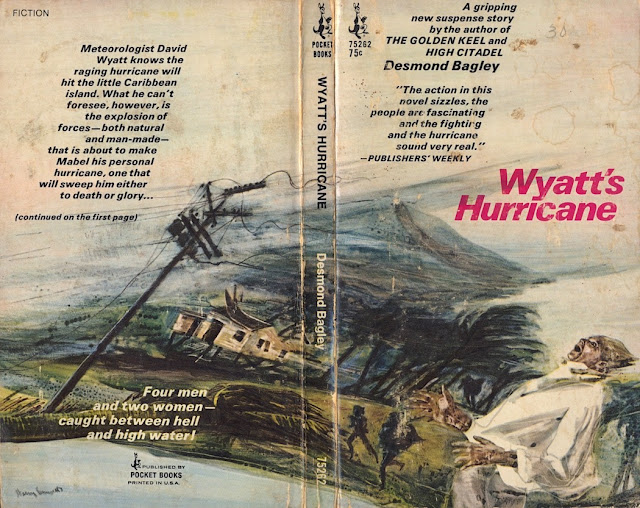 |
| CLICK ON IMAGE TO ENLARGE |
Collins of London published the first hardback edition of Wyatt's Hurricane in 1966 (top). Pino Dell'Orco produced the jacket art. A childhood interest in comic books led Dell'Orco into a life of illustration, first in his native country of Italy and then later in England, where he produced scores of comic style illustrations for Fleetway Publications, as well as book covers for Collins and many other prominent British publishers. War, aviation and adventure scenes tended to be what he leaned towards, and many of these paintings are now in private collections and galleries all over Europe. The artist died in 2013.
The first US hardback edition of Wyatt's Hurricane was published by Doubleday in 1966 (middle). Kiyoaki "Kiyo" Komoda produced the jacket art. Komoda was born in Japan but studied art in the United States, at Los Angeles City College and Chouinard Art Institute. He is known primarily for illustrating children's books. His son Paul is also an artist and sculptor.
The first US paperback edition was published by Pocket in 1968 (bottom). Harry Bennett produced the cover art. I have always been ambivalent towards Bennett's artwork, but this cover is as powerful and visceral as anything in this post. Bennett was an award winning painter and illustrator who produced more than 1000 book covers in his career, starting in the 1950's and ending in the 1990's. Bennett was said to be a kind, gracious man and a mentor to many. He passed away in Maryland in 2012 at the age of 93.
My Bride in the Storm was published by Avon in 1950. The cover artist is unknown. The author, Theodore 'Ted' Pratt (1901-1969), bounced around a lot of places globally before settling permanently in Florida. He wrote 30 novels, four of which are mysteries published under the pen-name Timothy Brace. He also published two collections of short stories. Pratt was often noted for trying to accurately portray the regional peoples depicted in his articles and stories, which on one occasion got him in hot water. While living and working as a young journalist in Majorca, Spain, Pratt wrote an unfavorable article about the locals, citing them as "among the cruelest people to animals extant in the civilized world", and that "they make inept servants--and when not shirking their work from pure laziness or contrariness, they are stealing food to take to their own home." Not long after the article was published Pratt and his wife were, not surprisingly, forced to leave their paradise home in Majorca and move back to the United States.
Popular Library republished Eberhart's novel in 1964 (bottom), with cover art by William Teason (1922-2003). Teason is noted for having illustrated practically every Agatha Christie title that was ever published in paperback, and sometimes more than once, as well as those from Eberhart, Leslie Ford, Doris Miles Disney, Mary Roberts Rinehart, Shirley Jackson, and, well, the list just goes on and on and on. Teason's work ethic was second to none.
BANTAM: "I can't take any more," Jim Shaw said. "If I don't leave I'll kill her."
He left Beadon Island that day.
But he came back that night, secretly, quietly, gun in hand. That night Hermione died!
It looked like an open and shut case to everyone but Nonie. Nonie knew Jim wasn't guilty; she knew why he had come back...
She had to tell the truth about herself and Jim. She Told-- and learned the fury of a killer's rage!'
Robert Hale Limited of London published the first hardcover edition of Murder in the Wind in 1957 (middle-upper), changing the title to Hurricane, perhaps in the hope it would appeal to a wider audience. The jacket art, by an unknown artist, is an almost exact duplication of George Gross's cover art from the Dell edition.
Pan published the first UK paperback edition of Hurricane (aka Murder in the Wind) in 1963 (middle-lower). The cover art here is also uncredited but my guess is that it was produced by Stephen Boldero.
Back in America, publishers still favored MacDonald's original title, Murder in the Wind. Fawcett Gold Medal was one of those, releasing this paperback edition with its rain driven cover circa 1971. Robert McGinnis, who produced the cover art, is one of those paperback illustrators whose femmes fatales don't always jibe with me, but I know I'm mostly alone in that regard. Some folks, like Neil Gaiman, actually requested his style when softcover reprints of his works were being negotiated; "I want that bloke who did all those sexy covers back in the 1960's!" So the 90-year-old McGinnis was found and hired. Gaiman gets what Gaiman wants after all, but I'll always wonder if he wasn't recalling the gorgeous gals of Robert Maguire and not McGinnis.
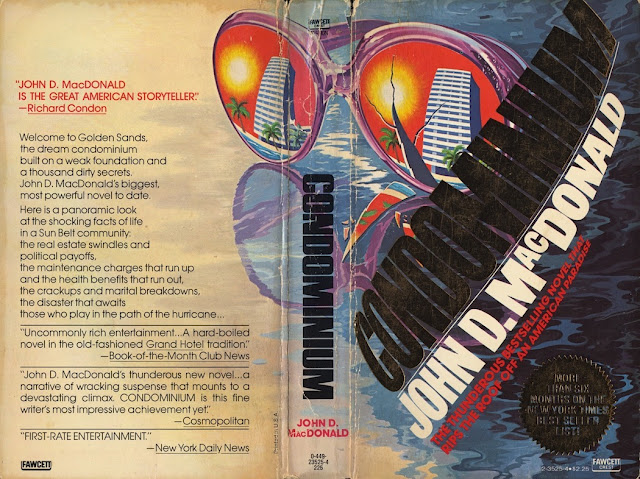 |
| CLICK ON IMAGE TO ENLARGE |
The first US mass-market edition of Condominium was also published in 1977, by Fawcett Crest. Its cover art, also by an unknown artist, omits any warning of the impending hurricane but it still fascinates with its cracked lens, a metaphor for the condominium's cracked foundation.
 |
| CLICK ON IMAGE TO ENLARGE |
Lou Feck could go big if it was needed, especially when he was told to paint a hurricane slamming into the Florida coast. Popular Library published Passion in the Wind in paperback in 1977. It was one of six novels, two of them mysteries, that longtime Florida resident Herman Nathan Weiss wrote during his time away from his day job as a Photo-Processing manager.
'The rain on his face was painful; he had to escape. Before he could turn, he heard the rumbling. Lifting his eyes, he was horror-stricken. In the bay, on the other side of the causeway, a mountainous wall of water was racing in his direction. It hadn't reached the road yet, and it was impossible to judge its distance. The roaring was tremendous. His fists, knees and chest tried to burrow into the soft mud. He thought his ear-drum would burs and he glanced upward. The sky was a solid green mass, dark and foreboding. But an instant later, he realized it wasn't the sky. He was under the wall of the monster wave... This was Larry Toren, trapped in his desperate race against time to reach the house where his pregnant wife lay exposed to the approaching terror. He was just one of the people about to be swallowed up in an unleashed fury that would turn each life into a savage drama of sheer survival.'
Englishman Trevor Dudley-Smith (1920-1995) changed his name legally to
Elleston Trevor after using that pseudonym successfully on his first novel in 1946. He wrote more than 100 novels after that, many of
them bestsellers, even ones that were still published under additional
pseudonyms. Trevor was in fact about as good and entertaining a writer
of adventure, mystery and espionage as we've ever had, and I think these two covers of Gale Force, Elleston Trevor's storm-battered sea novel, compliment each other and Trevor quite well. One shows the devastating effect the storm has on humans, the other on the vessel itself.
Stanley Zuckerberg produced the cover art on the 1960 Bantam edition (top). American born Zuckerberg (1919- 1995) was a great artist whose oil paintings sometimes transcended the very paperbacks they were transposed on, especially if they were given edge to edge coverage, like here. He produced more than 300 of them too, and he also supplied illustrations for most of the major slick magazines of his era, including McCall's and The Saturday Evening Post. In 1965 he left the publishing field altogether to concentrate instead on fine art painting, producing maritime and coastal scenes for galleries and exhibitions.
Christopher Mayger produced the cover art on the 1971 New English
Library edition (bottom). Mayger (1919-1994) was one of Britain's
leading painters of maritime scenes, be it historical or contemporary,
and he represented some of the biggest authors in maritime literature,
including Alexander Kent, Nicholas Monsarrat, Farley Mowat, Patrick
O'Hara and Douglas Reeman.
BANTAM: 'Captain Harkness felt the signs. The SS. Atlantic Whipper had been pummeled and thrashed and violated by hungry seas and gale-force winds. Now in her last struggle to keep afloat she had still another enemy--fear, a fear that made passengers into bumbling nuisances, seamen into dangerous rebels. The only strength lay in the unyielding authority of her captain.'
NEW ENGLISH LIBRARY: 'She was a big deep-water merchantman. Six thousand tons and forty in her crew. On this trip she was carrying ten passengers and a cargo of grain. 200 miles off Land's End at the close of her swift Atlantic crossing she runs into a storm. This is a novel about a struggle of classic proportions. The struggle of one man against the gale forces of the Atlantic in a desperate effort to save his ship, his life and his self esteem.'
 |
| CLICK ON IMAGE TO ENLARGE |
Howard Terpning produced the cover art on the Dell paperback edition published in 1963 (top). Terpning (1927-) was a prolific illustrator of book covers as well as magazines. He also produced over 80 movie posters, among them Cleopatra, The Sound of Music, Lawrence of Arabia, The Sand Pebbles and The Guns of Navarone. In 1974 he decided to leave commercial art to try his hand at creating Western style paintings and selling them in galleries. Forty-two awards later says it was the right decision. Two of his paintings recently sold for more than $1 million dollars each.
Fontana's 1966 paperback edition has a sailor holding onto a piece of flotsam for dear life (middle upper). An artist has not been yet credited.
Fontana's 1971 paperback edition has that same sailor being rescued by rope (middle). Being swept into the rocks had to have hurt. Again, no artist has been credited.
Paul Wright produced the cover art on the Fontana edition published in 1978 (middle-lower). Wright was born in England in 1947, and studied at the Farnham School of Art and Wimbledon College of Art in the 1960's. He is one of Britain's finest painters of maritime scenes, and a longstanding member of the Royal Society of Marine Artists, with scores of book covers in a variety of genres to his credit.
Robert "Bob" Chronister produced the cover art on this 1978 Ballantine paperback edition (bottom, and yes, more reason to stay outta the water). I don't know much about Chronister on a personal level, but he was extremely active throughout the 1970's and 80's, representing authors as diverse as Ben Bova, Mary Higgins Clark, James Herriot, Lou Cameron, Miriam Lynch and Carolyn Haywood, among others.
FONTANA editions: 'Laerg, forbidding and mysterious, rising out of the Atlantic like the last peaks of a submerged continent, provides a perfect setting for the story of two brothers, one an artist, the other a soldier. For both of them the lonely islands holds a fatal fascination. At last, on the island itself, the brothers confront each other, and the soldier's tragic secret is torn from him in one of the most powerful scenes this master storyteller has ever written.'
'Phoenix Island disappeared four minutes after nine o'clock. It disappeared in the biggest explosion ever recorded. The pressure wave from Phoenix circled the earth ten times. The explosion was heard at distances of almost four thousand miles. The energy released was equivalent to the detonation of between one and two million hydrogen bombs. The tidal waves were three hundred feet high as they started on their journey across the Pacific. And in their path was the Emperor, the world's largest ship, on her maiden voyage.'
Oscar Liebman (1919-2002) produced the jacket art on the Doubleday edition. It was one of hundreds of book jackets and paperback covers that the artist produced over a long career that began in the early 1950s. Liebman was noted for his Broadway show posters and album jackets too, among them, "Gypsy," "Man of LaMancha," and "New Girl in Town." He also dabbled in other art forms, such as mixed media collages.
Popular published the paperback edition in 1982. The cover art was produced by Sanu Kazuhiko. Once again, both cover illustrations seem to compliment each other quite well.
I can't keep wondering if da Vinci ever drew his own cover art for this, his only known novel (if indeed he even wrote it). Sounds like another mystery angle for PBS to explore.
'One man... two women... haunted by terror, pursued by destruction, caught up in the desperate coils of mob frenzy, of unfulfilled desires, of the primal hunger for survival... From the monumental works of Leonardo da Vinci have come some of the most thrilling discoveries of all time-- among them the manuscript for THE DELUGE, a powerful and violent story of life and love in a time of blazing turmoil and savage upheaval.
Hilbert Schenck (1926-2013) was trained as an engineer, and taught at the University of Rhode Island. In addition to textbooks, he wrote three science fiction novels and at least a dozen short stories. Wave Rider collects five of those stories, one of which, "The Battle of the Abaco Reefs," was nominated for both the Hugo and Nebula Awards.
'Five unique experiences linked by the awesome power of an alternate universe. Feel the thrill and rush and peace of those who ride the waves. Through the power of telepathy a man merges with the ocean to prevent the greatest of all sea disasters... A chemical is released that kills all underwater life and lives and grows to kill again... Nine hundred feet down is a trapped, embattled sub, frantically seeking the technology to reach the surface--or to lie forever beneath it... A society of children, joined by a sensory link, fight a fearsome battle with their weapons of ocean currents and solar mirrors... One extraordinary man charts and finds the wave that, if ridden, will forever make him one with the sea...'
Ralph Winton Brillhart (1924-2007) produced the cover art on the 1964 Monarch first edition. Brillhart was primarily a realist, but he also painted abstracts, some of them mirroring the works of Richard Powers. He began creating SF and fantasy covers as far back as the early 1960's but then he seemed to vanish for a while only to reappear in the 1980's with an even more mature style on display. I suspect his absence away from SFF may have been spent producing cover art for other genres or perhaps even advertising.

Mike McIver produced the jacket art on Richard Martin Stern's disaster novel, Tsunami. It was published in hardcover by W. W. Norton & Company in 1988. As far as I can tell, a paperback edition has never been released. Mike McIver was a graphic book designer who was active from the 1970s through the 1990s, representing authors as diverse as Aaron Marc Stein, David M. Raup, Howard Berk, Stephen Jay Gould, and William Harrington, among others.
Ken Steacy produced the jacket art on the 1983 Douglas & McIntyre hardcover first edition (top), a wraparound which unfortunately I don't have a full image of. Steacy is a Canadian artist of both book covers and comics who in 2009 was inducted into the Canadian Comic Book Creator Hall of Fame. Since 2011 he has been teaching art at a small college in Vancouver. Several years ago I exchanged emails with him about our mutual admiration for artist Lou Feck. At the time, Steacy was considering publishing a book of Feck's artwork. Alas, it never came to fruition.
BANTAM: 'Devastating solar flares wipe out the earth's protective ozone layer. Ultraviolet rays scorch vegetation and blind livestock. No one ventures outdoors without dark glasses and sun-block creams on his skin. It seems nothing could be worse. Then, the unthinkable. Vast Antarctic eruptions hurtle a monstrous tidal wave--tsunami--onto America's west coast. In seconds whole cities are crushed, followed by raging fires, nuclear leaks, countless deaths. San Francisco becomes a battle zone as millions fight for food, medical supplies, survival. The government is in chaos, the police powerless. For San Francisco scientists Don and Kirstie Kennard, one hope remains for the stricken city. Together, they can save millions of lives--if they can survive for a few more days... if the tsunami does not come again.'
 |
| CLICK ON IMAGES TO ENLARGE |
John Berkey also produced the cover art on Joseph DiMona's The Benedict Arnold Connection, one of his most awe inspiring paintings in his portfolio.
Dell published it in paperback in 1978. Joseph Dimona
(1923-1999), wrote five novels and five non-fiction books,
two of them in collaboration with famed Los Angeles coroner, Thomas Noguchi. He
also was the ghost writer for Watergate culprit H. R. Haldeman's memoir
about the Nixon-Watergate scandal, The Ends of Power. But it was his fiction that made use of his writing skills the most; you would be hard pressed to find a more exciting writer of espionage oriented thrillers than Mr. DiMona.
'Mr. President, I have the stolen nuclear MIRVs in my possession. I intend to explode them. A tidal wave will be created at 6 P.M July 2 by an underwater explosion in the Atlantic Ocean off New Jersey. When the wave reaches the shore it will be 100 feet high, filled with radioactive poison. One man can stop this catastrophe. He knows who he is. I don't. 949 747 832 .... '
'The terrorist's threat was awesome. A radioactive tidal wave one hundred feet high would break upon the coastal cities of New Jersey and Long Island, caused by a nuclear explosion. And the terrorist who stole three nuclear bombs must be insane because the threat did not include a single political or financial demand. It merely told the American people the tidal wave would occur in thirty-six hours, and no one could stop ti. What did the terrorist want? The President turns to George Williams, the Justice Department's most skilled investigator, for help. Williams can find only one clue to the terrorist's intentions, a fragment of an authentic Revolutionary War map left near the empty missile silo from which three nuclear MIRVs were stolen. On the margin of the map is a note which reads: "For revenge of Nancy, beloved of Benedict Arnold," written two hundred years ago by this country's arch traitor. And part of the tidal wave threat that arrives at the White House contains the same secret code which Benedict Arnold used when he corresponded with the British. Williams must track an obsessed terrorist who once was one of the Deep Men, an anonymous group of assassins whose sinister intrigues are only now becoming known. For George Williams the challenge seems overwhelming. The clues are too puzzling, the time too short, the Deep Men too powerful for Williams to discover--before it is too late--the terrifying secret of the Benedict Arnold Connection.'
According to Kim Stanley Robinson in his novel, New York: 2140 (Orbit, 2017), and succinctly confirmed by the book's jacket illustrator Stephan Martiniere, sea levels in the 22nd century will rise to heights of 50-feet or more due to climate change. So far, Robinson's book is just speculative fiction, but that doesn't mean a rise in sea level isn't in imminent in reality. Scientists are saying now that a rise between 2 and 4 feet can be expected by the year 2100, which would mean portions of New York City would be flooded, pretty much like it is in Robinson's book and in Martiniere's cover painting.
In the author's fictional future history the hundred plus years between now and 2140 were devastatingly traumatic: sea levels rose ten feet by 2050, then forty more by 2100, resulting in the deaths of billions of people. But Robinson is also an optimist and one of science-fiction's best utopians, so his New Yorkers have adapted amazingly well to their new watery environment just like 19th & 20th century Venetians did to theirs. Midtown office towers have been turned into apartments with their own docks, dining halls and rooftop farms. Commuters use vaporettos, or skim to their destinations in speedboats. Pedestrians travel through the city via a network of skybridges, essentially big plastic reinforced tubes that span the gaps between buildings. Living in a water-slogged Big Apple isn't so bad after all, according to the 'Panglossian' Robinson.
BUT I'M not a 'Panglossian,' I'm a cynic, and a realist, and I think how we will fare in our coastal regions will look more like the drowning image below, as painted by artist Charles Moll...


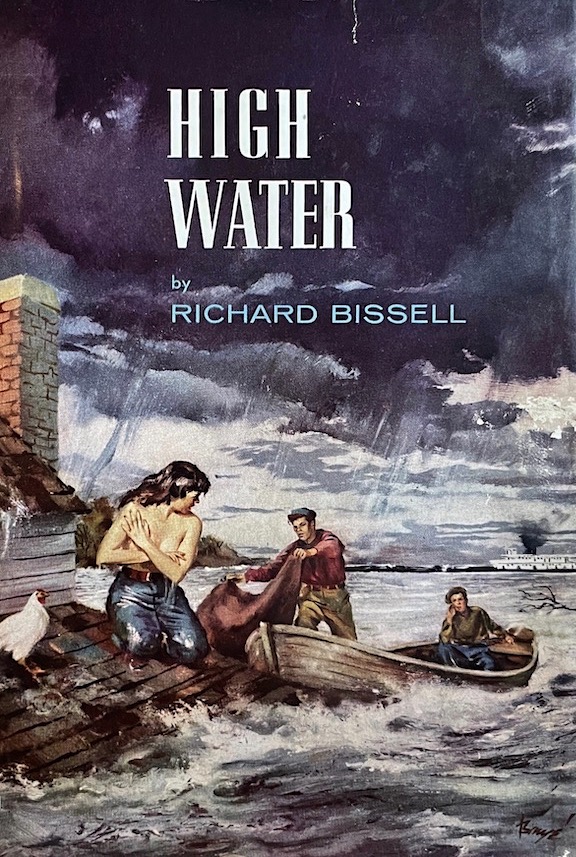












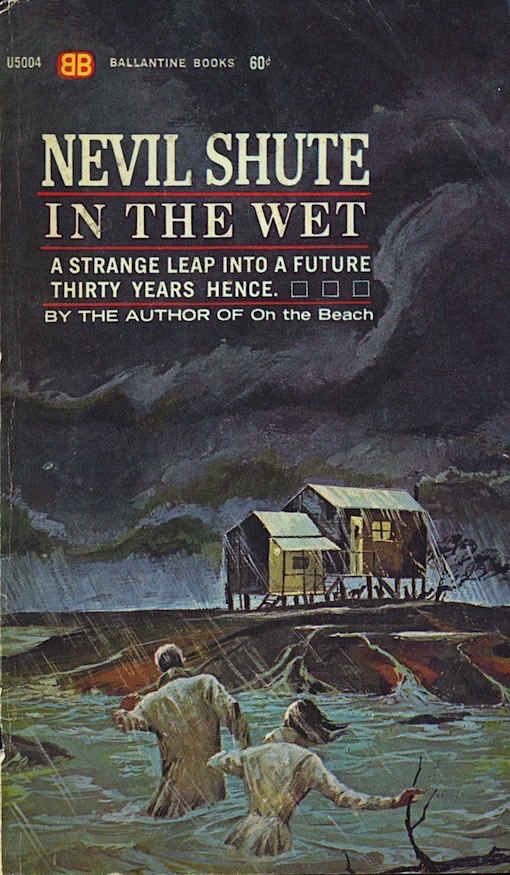














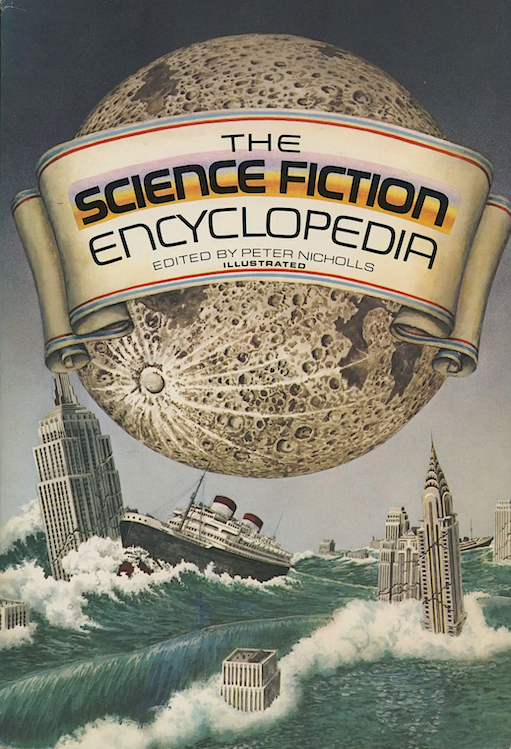























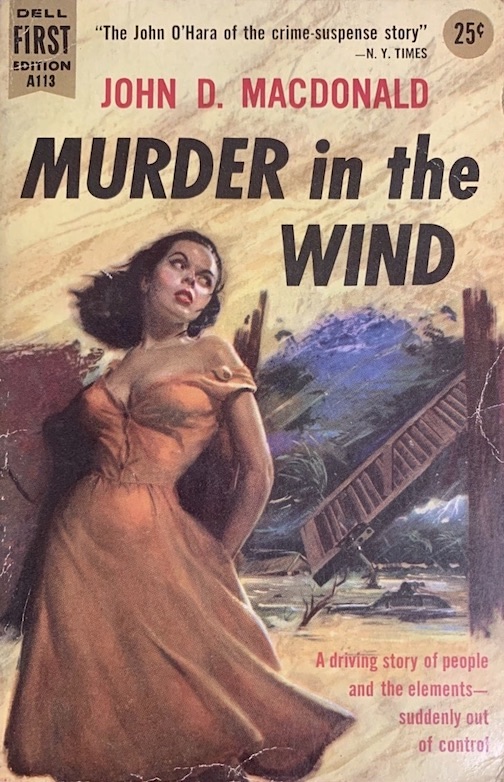
.RobertHale.a.jpg)
.Pan.G643.a.jpeg)



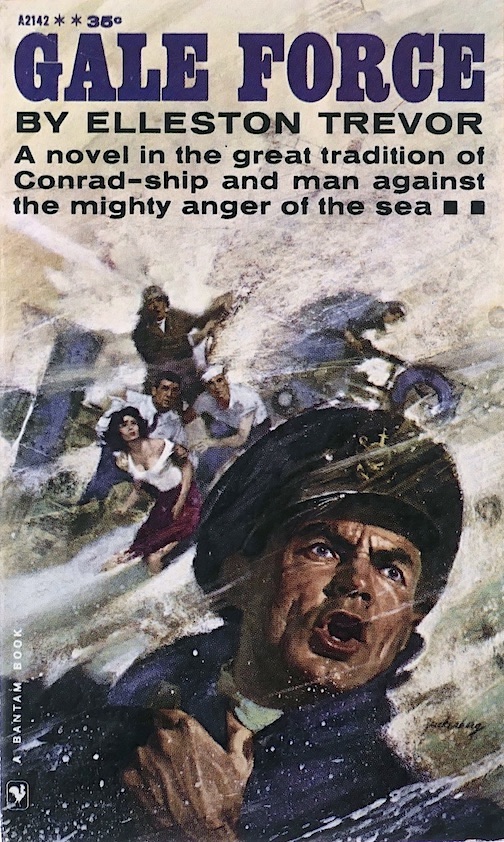
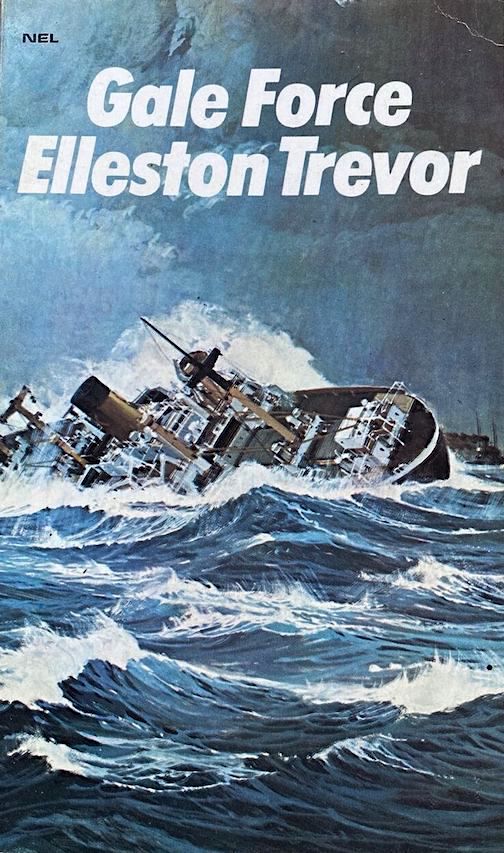





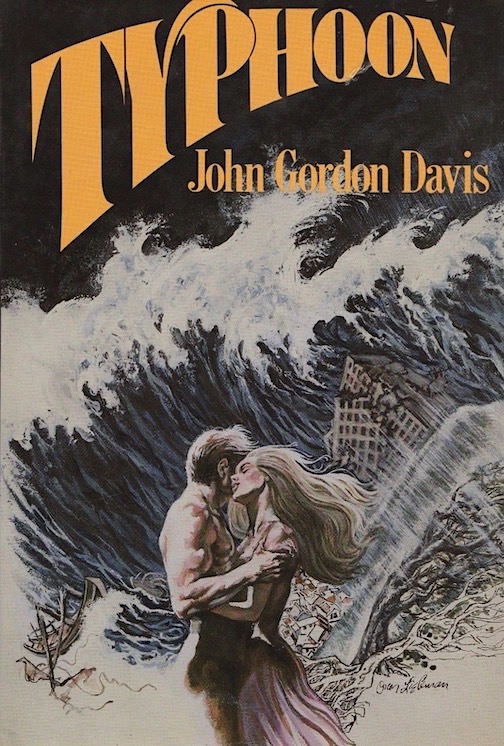

.TheDeluge.Lion.223.AlRossi.art.a.jc..jpeg)









No comments:
Post a Comment